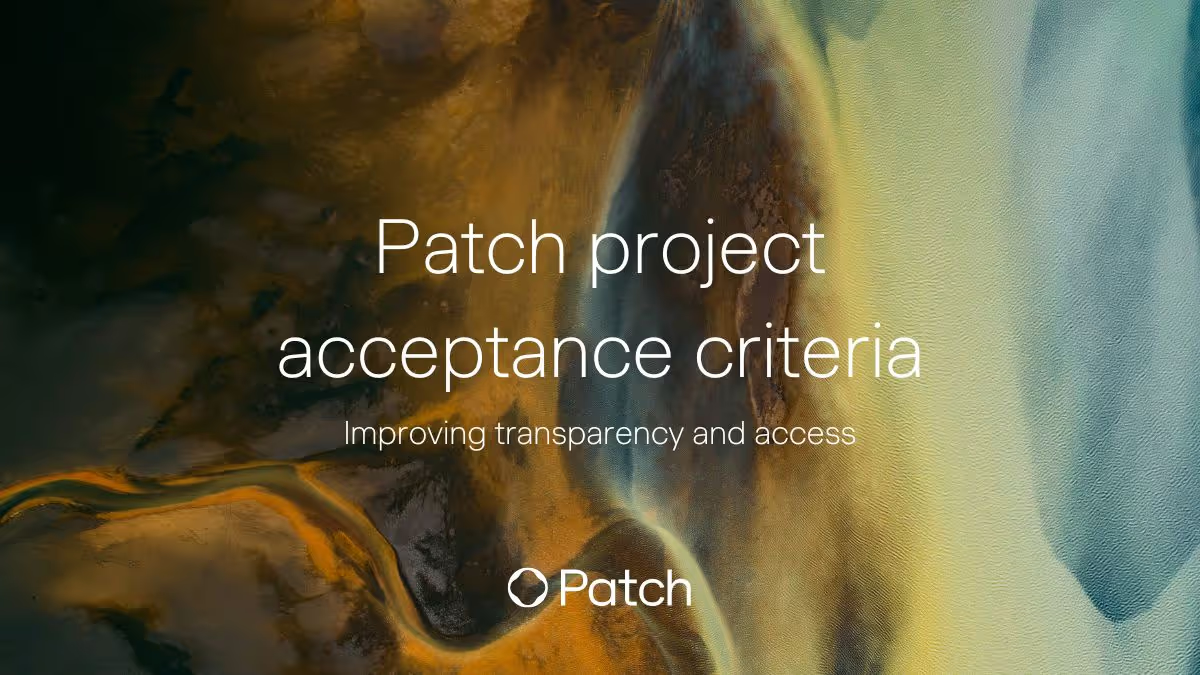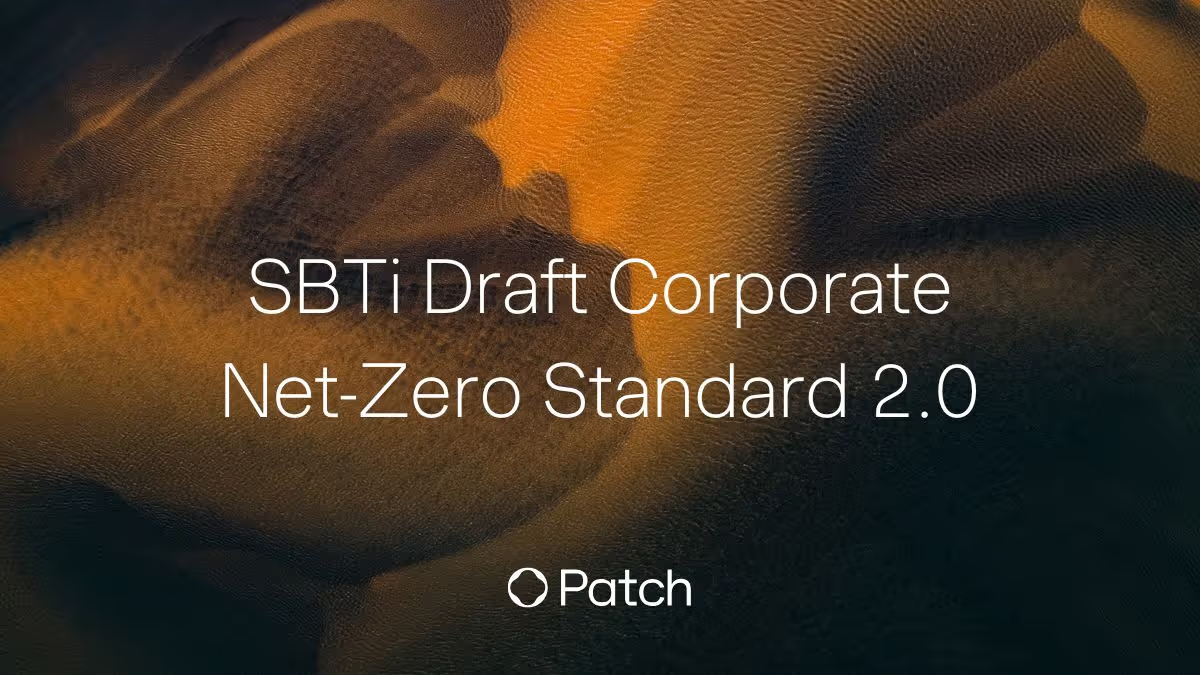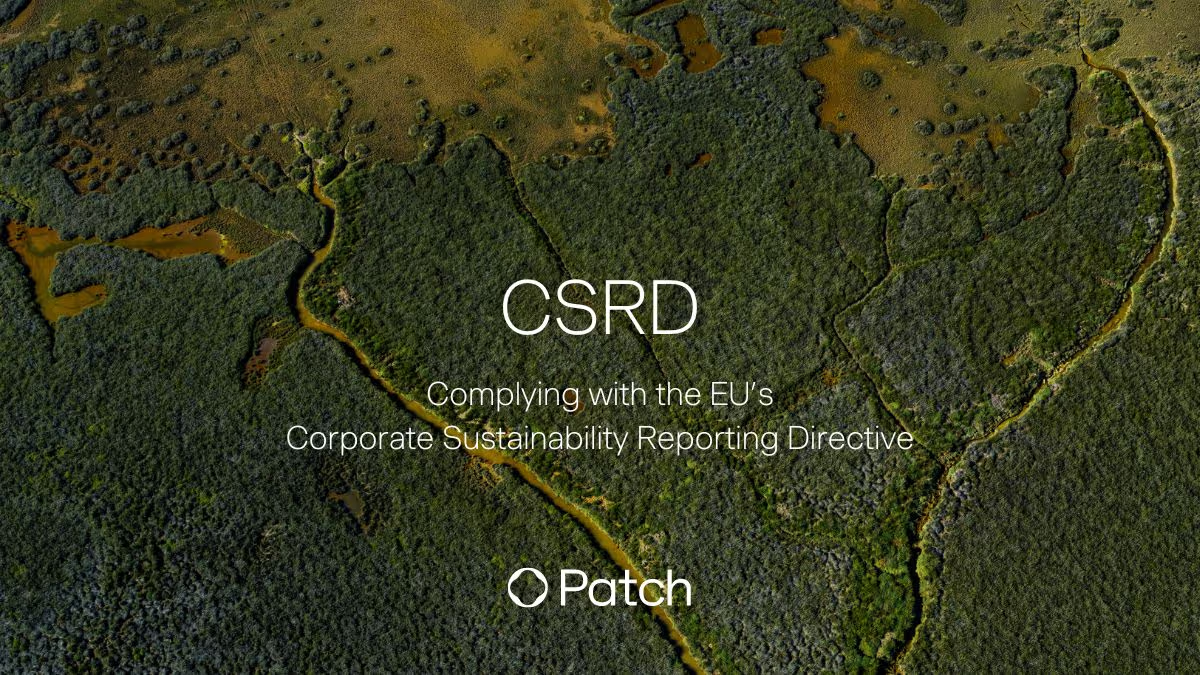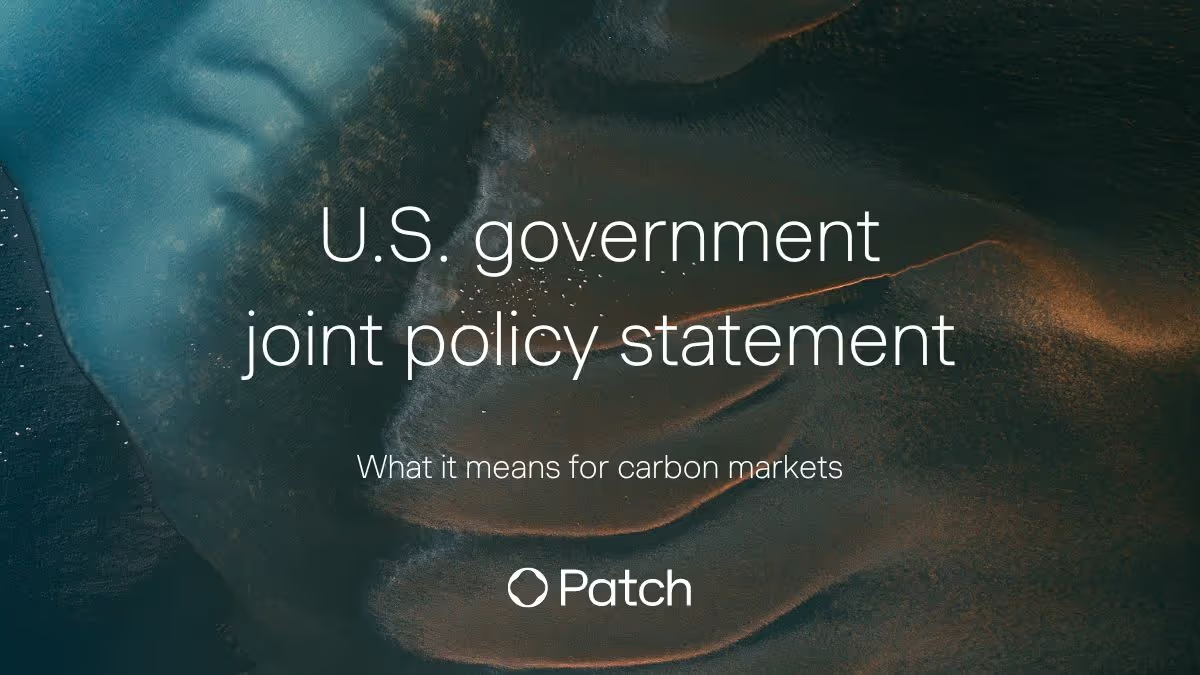This is an incredibly exciting time for the voluntary carbon market (VCM). Investments in the VCM have quadrupled over the last couple of years. As the world of climate tech evolves, so are the number of emerging, novel solutions to carbon dioxide removal.
The standards landscape for the VCM is also in a state of change. Each of the major standards bodies has released significant updates to their guidelines, or they’re in the process of public review. On top of that, measuring, reporting, and verification (MRV) technology and methods are constantly advancing.
So much is in flux, but that means there’s SO much potential for scaling and creating massive impact. The challenge with such a rapidly evolving market is that it can be difficult to stay on top of market updates or even decode what carbon credit integrity really means.
How Patch scales access and integrity
At Patch, our goal is to help all projects demonstrate their credibility without limiting the ability for important projects to iterate, innovate, and scale. It’s critical for the long-term viability of the market to expand both access and integrity.
Our project acceptance criteria set a strong baseline for integrity based on key areas of risk identified and tracked by the market. Our goal is not to develop a new standard, but to find alignment in all the leading standards for projects, programs, and corporations. We will continue to iterate on our criteria as these standards evolve.
Our approach to transparency
There are a lot of approaches to carbon project vetting out there, but we’ve found it can be challenging to understand why certain decisions are made or how varying standards overlap without deep analysis. We believe it’s critical to bring buyers into our vetting process, exposing and educating them on exactly what’s happening under the hood.
Our recent whitepaper does just that: it makes our vetting process as clear and transparent as possible, especially the criteria we use to accept or reject projects. We created our whitepaper to document why we’ve made each decision we’ve made. Since it’s impossible to eliminate risk, we hope this will help buyers understand the options that are available to them, and to construct the best possible portfolio to meet their goals. This clearly defined approach will also make it easier for project developers of every shape and size to understand the requirements they’ll need to meet to be accepted to the Patch platform.
Here’s a quick overview of what’s inside.
Patch’s verification and validation framework
Suppliers need predictable pathways to verification and validation. For project types like forestry and landfill gas that can certify through traditional pathways, this process is straightforward. Developers can certify their entire project through an ICROA-endorsed standard like Verra or Gold Standard.
Most cutting-edge projects are not eligible for traditional certification. There just aren’t the scientific methodologies in place (yet) to certify these projects. This puts developers on the hook to create and verify a new scientific methodology while they raise funding and launch an innovative project. Without a consistent framework for evaluating projects that are not certified through a traditional process, many buyers shy away from investing in critical new projects that need funding to scale.
Rather than being constrained to working through one certifier, we will accept a project as long as they can demonstrate that their methodology, project design, and outcomes have been verified by a third party, and have their retirements publicly tracked on a single registry. The goal with these requirements was to create a pathway to demonstrating legitimate verification for all project types. In order to avoid making developers jump through lots of different hoops, if their project is certified under an ICROA-endorsed standard, it will meet Patch’s verification and validation requirements. If the project is not certified under ICROA, we will collect and validate documentation supporting verification of methodology, project design, and outcomes by qualified third parties. On top of that, each project will be required to align with the ICVCM Core Carbon Principles. (Note: The Clean Development Mechanism (CDM) isn’t eligible. Read why in the complete whitepaper!)
Take Running Tide, for example. Running Tide has been a leader in developing a verifiable process for high impact ocean carbon removal projects. Without an existing methodology available, Running Tide worked to develop an ISO-conformant project framework that was peer-reviewed by dozens of carbon removal and climate organizations, went through their independent scientific advisory board, and factored in complex research through a process that included lab-based experiments, extensive earth system modeling, and pilot studies before the full project was launched. Running Tide has taken this work a step further, working with Deloitte to verify their catalog of potential environmental impacts — in part to ensure the project does not have unintended harm to ocean ecosystems. Earlier this month, Running Tide delivered their first credits. Running Tide’s work will in turn make the verification process easier and more straightforward for any new ocean carbon removal organizations looking to get started.
Raising the bar for projects and suppliers
Beyond the methodology, project design, outcome, and attribution requirements, Patch has some further eligibility criteria that fill in the gaps where traditional certification has not always been enough to eliminate risk.
These requirements are built to be extremely responsive to changes to the standards and market landscape to reflect the current best science in this rapidly-evolving space. Some of these requirements aim to move away from project types that are no longer eligible for certification (such as US-based renewable energy projects). These projects were important in early stages of the market, but in many cases, because technologies have scaled, or policies have changed, these projects are no longer seen as additional.
We’ve also ruled out some measurement approaches and credit types that are still emerging, and are too risky at this stage (specifically, projects using tonne-year accounting, and tokenized credits). For any new, innovative approaches to crediting, we’ll continue to follow the market, and update our criteria as understanding evolves.
Patch is also implementing a 5-year vintage cutoff for projects listed on our marketplace, in order to both ensure that projects are based on best available science and methodologies, and also increase the likelihood that credit revenues will support new climate mitigation.
Lastly, we know that carbon credit purchasers don’t always work directly with project developers. Carbon credit suppliers can be everything from a small-scale startup developer to an enterprise aggregator. Each of these types of suppliers adds a different value to project development and scaling— from operations, to financing, to marketing and sales.
Because the supplier landscape is complex, not many buyers purchase their credits directly from the project developer. The process can sometimes be opaque, or difficult for a buyer to unpack. Our supplier requirements aim to gather more information about suppliers and developers for each project to increase transparency around an opaque process.
As a whole, our project acceptance criteria are geared to provide more scrutiny towards more types of projects, so buyers can access more credits with greater transparency. The full details are (you guessed it!) in the whitepaper.
Iteration is critical to success with this approach
Iteration is built into the fabric of our company at Patch. Science and technology will evolve, and over time, so too will our criteria. Our goal is for all buyers and suppliers to have a sense of stability within the Patch purchase process, even as the market changes around us. We commit to maintaining a solid baseline, and updating partners along the way as the market continues to grow.






